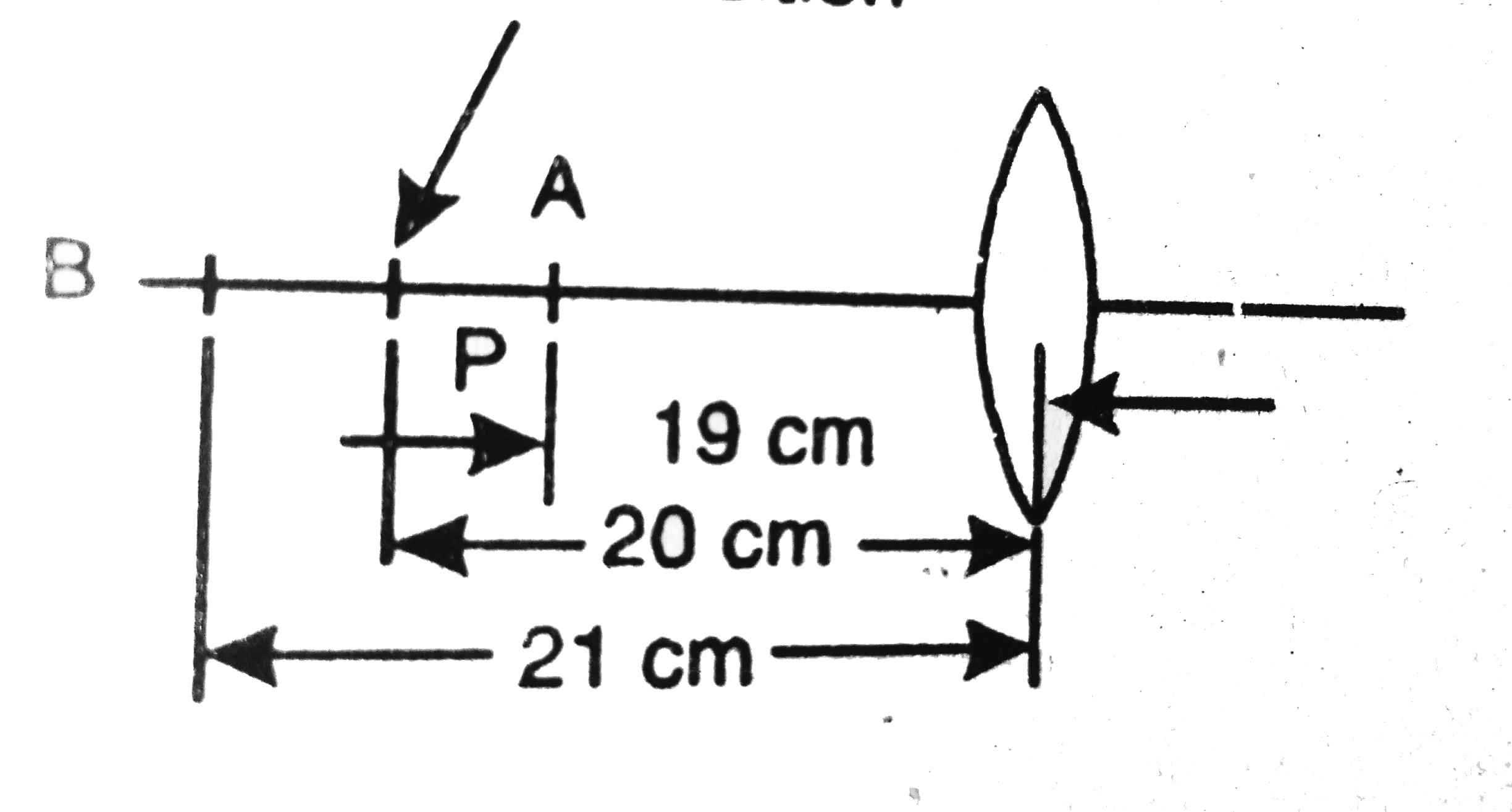Lenses are constructed by a material of refractive indeic 1.50. The magnitude of the radii of curvature are 20 cm and 30 cm. Find the focal lengths of the possible lenses with the above specifications. Solution in Gujrati
The correct Answer is:A, B, C, D
Four possible lenses,

i. R1=20cm,R2=30cm
Fori.R1=20cm,R1=−30cm
1f−(μ−1)(1R1−1R2)
=0.5[120−130]=0.5×560x10
f=24cm
Forii1f=(0.5)[120−160]
R1=20cm
R2=+30cm
=0.5×110×60
f=120cm
for iii R1−20cmR2=−30cm
1f=(0.5)[−120+160]
f=−120
For iv R1=−20cm,R2=30cm
f=24cm
Topper's Solved these Questions
Similar Questions
If the light moving in a straight line bends by a small but fixed angle it may be a case of
07:30View SolutionThe electric field in a region is given by →E=35E0→i+45E0→j with E0=2.0×103NC−1. Find the flux of this field through a recatngular surface of area 0.2m2 parallel to the y-z plane.
03:25View SolutionFind the range of frequency of light that is visible to an average human being (400nm<λ<700nm)
04:38View SolutionLenses are constructed by a material of refractive indeic 1'50. The magnitude of the radii of curvature are 20 cm and 30 cm. Find the focal lengths of the possible lenses with the above specifications.
05:26View SolutionThe effective focal length of the lens combination shown in Fig. is -60 cm . The radii of curvature of the curved surfaces of the plano-convex lenses are 12 cm each and refractive index of the material of the lens is 1.5 . The refractive index of the liquid is : .
02:26View SolutionTwo thin symmetrical lenses of different nature and of different material have equal radii of curvature R=15cm. The lenses are put close together and immersed in water (μw=43). The focal length of the system in water is 30 cm. The difference between refractive indices of the two lenses is
03:29View SolutionThe radii of curvature of the two surfaces of a lens are 20 cm and 30 cm and the refractive index of the material of the lens is 1.5. If the lens is concave -convex, then the focal length of the lens is
04:24View SolutionLenses are constructed by a material of refractive index 2 . The magnitude of the radi of curvautre are 20cm and 30cm . Find the focal lengths of the possible lenses with the above specifications.
05:26View Solutionकिसी द्वि-उत्तल लेन्स की वक्रता त्रिज्याये समान है। लेन्स के पदार्थ का अपवर्तनांक 1.5 है यदि लेन्स की फोकस दूरी 30 सेमी हो तो उसकी वक्रता त्रिज्याये ज्ञात कीजिये।
04:45View Solution1.50 अपवर्तनांक वाले पदार्थ से लेंस बनाए जाने हैं । लेंस की सतहों की वक्रता - त्रिज्याओं के परिमाण 20 cm तथा 30 cm हैं । इतनी सूचनाओं के आधार पर बनाए जा सकनेवाले सभी लेंसों की फोकस - दूरियाँ f निकालें ।
07:17View SolutionThe radii of curvature of the two surfaces of a lens are 20 cm and 30 cm and the refractive index of the material of the lens is 1.5. If the lens is concave -convex, then the focal length of the lens is
View SolutionArrange the following combinations in the increasing order of focal length
a) Two piano convex lenses of focal lengths 20 cm and 30 cm in contact
b) Two convex lens of focal lengths 20 cm and 10 cm in contact
Two convex lenses of focal length 25 cm separated by 5 cm.View SolutionLenses are constructed by a material of refractive indeic 1'50. The magnitude of the radii of curvature are 20 cm and 30 cm. Find the focal lengths of the possible lenses with the above specifications.
01:59View SolutionTwo thin symmetrical lenses one converging and other of diverging nature are made from different material have equal radii of curvature R = 15 cm, the lenses are put in contact and immersed in water (mu_w = 4/3). The focal length of the system in water is 30 cm. Then the difference between refractive indices of the two lenses is
02:47View SolutionThe effective focal length of the lens combination shown in figure is - 60 cm. The radii of curvature of the curved surfaces of the plano-convex lenses are 12 cm each and refractive index of the material of the lens is 1.5. The refractive index of the liquid is
 01:40View Solution
01:40View SolutionTwo thin symmetrical lenses of different nature and of different material have equal radii of curvature R = 15 cm . The lenses are put close together and immersed in water (mu_(w) = (4)/(3)) . The focal length of the system in water is 30 cm. The difference between refractive indices of the two lenses is
View Solution

